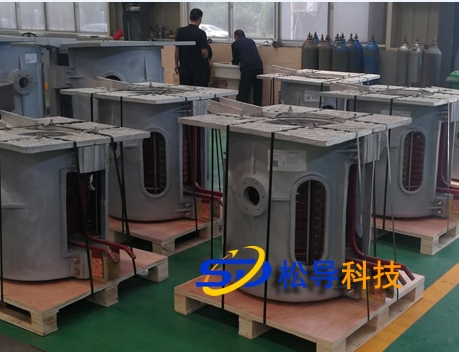- 08
- Oct
Comparison of frequency selection of induction melting furnace
Comparison of frequency selection of induction melting furnace
The selection of induction melting furnace frequency mainly considers economy and operating performance. Economy includes electricity bills and furnace lining costs.
1. Electrical efficiency. Theoretical analysis shows that when the ratio of the crucible diameter to the current penetration depth is about 10, the electrical efficiency of the electric furnace is the highest.
2. Stirring. Proper stirring can make the temperature and composition of the molten metal uniform, and strong stirring will aggravate the wear of the furnace lining, and lead to slag inclusion and pores in the molten metal. Especially when melting non-ferrous metals such as copper, aluminum, etc., the stirring is not easy to be too strong, otherwise the metal oxidation and burning loss will increase sharply.
3. Equipment investment cost: The investment cost of an induction melting furnace of the same tonnage is much smaller than that of a power frequency furnace.
4. Operating performance, the induction melting furnace can be started smoothly without starting the melt, the molten metal can be emptied, and it is easy to change the metal variety. Wet and greasy metal charges can be directly added to the induction melting furnace for smelting, while industrial frequency furnaces need to dry and degrease the metal charges. The power of the induction melting furnace can be adjusted steplessly, but the power adjustment of the industrial frequency furnace is often stepped. The power frequency electric furnace needs to adjust the three-phase balance, but the induction melting furnace does not.

